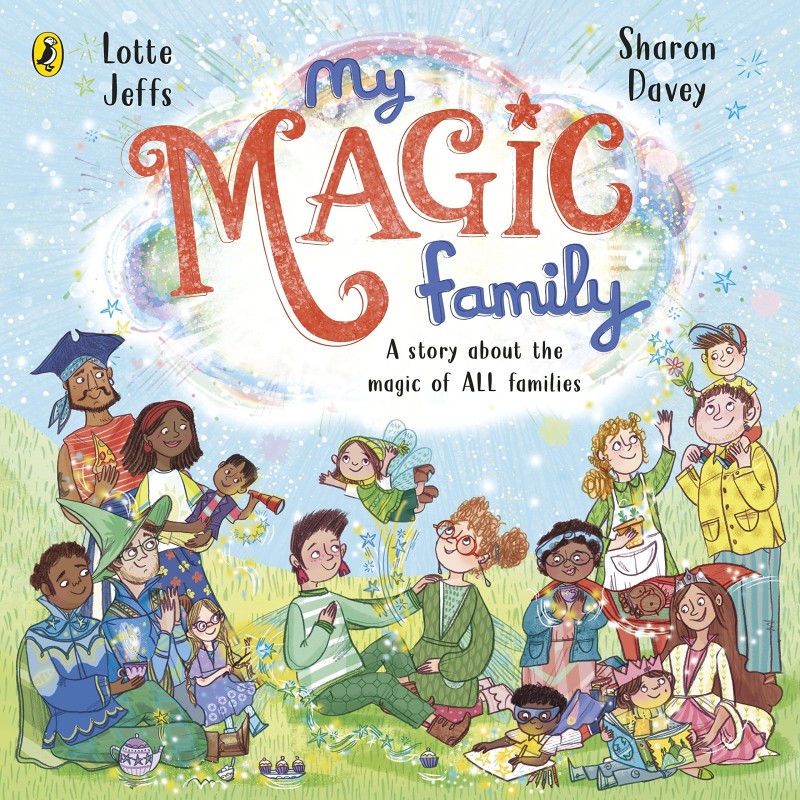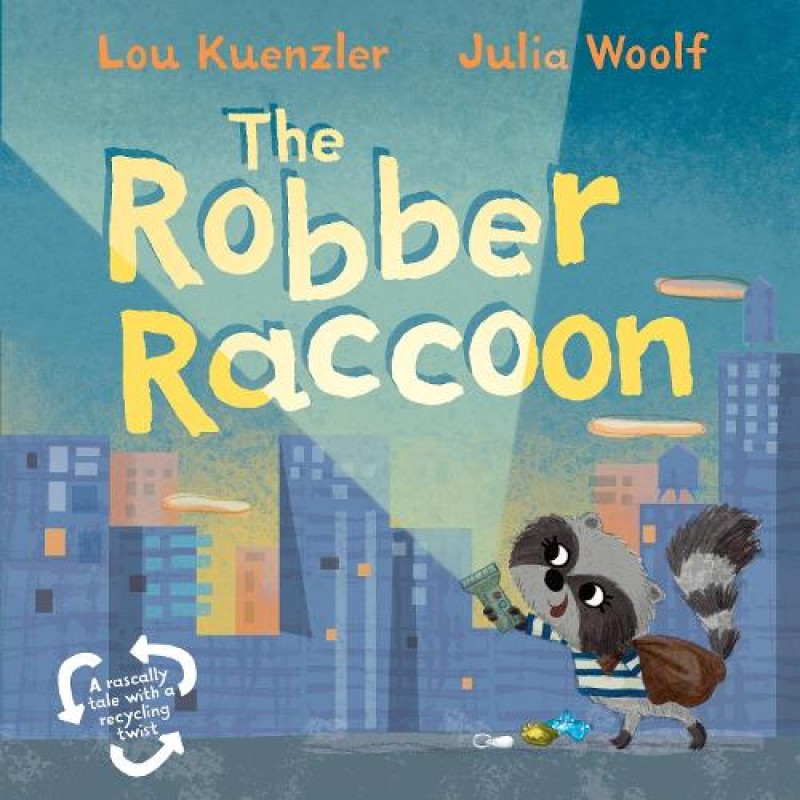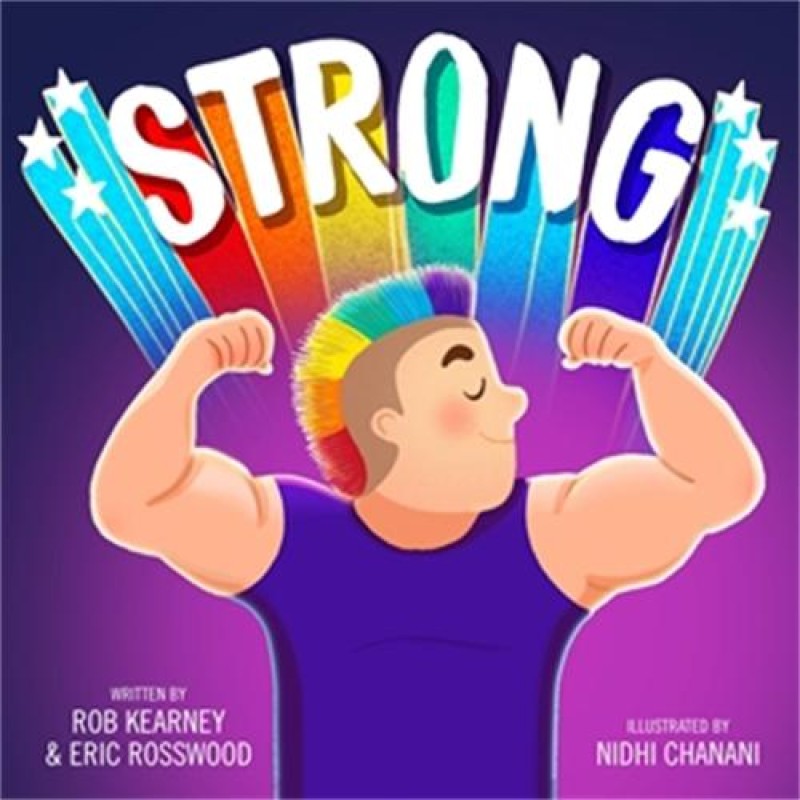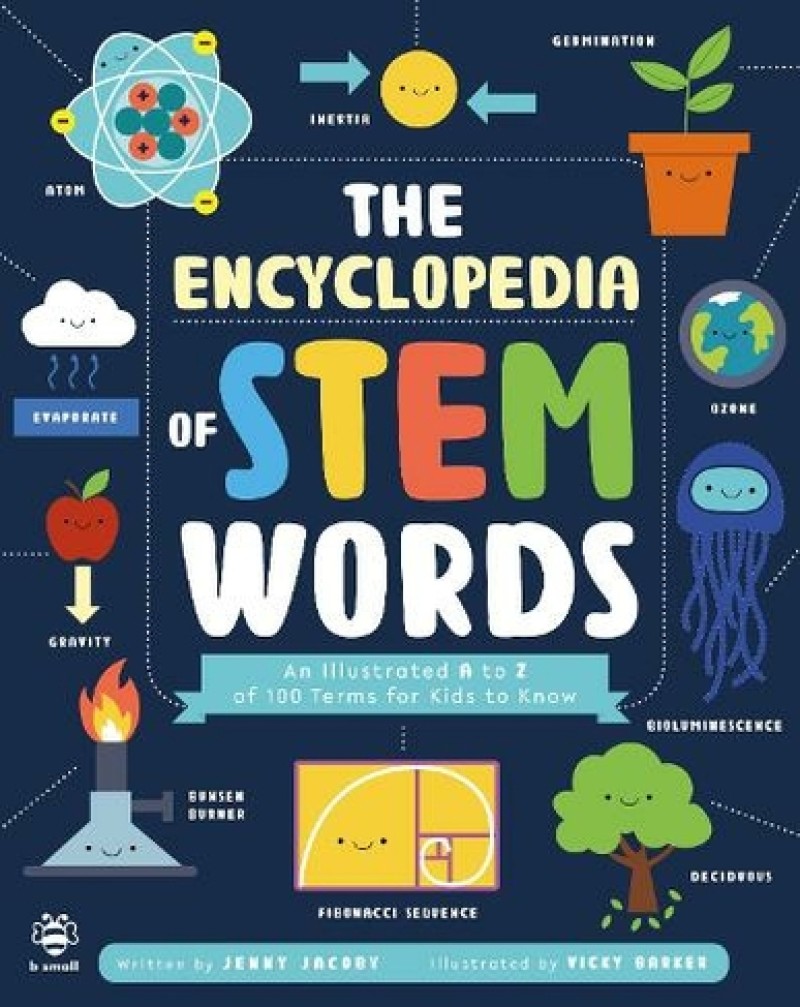Posted on: 30/05/2022
Pride and celebration are this month’s themes: pride in ourselves and each other and celebrating our worlds and the realities of others. This includes elevating perceptions of others through acknowledgement of what makes them different – including what others enjoy– and discourse around this is much-needed. Time and again our reviews return to the idea around children exploring the lived experiences and realities of others through literature but what we perhaps need to focus more on is instilling a sense of pride in children and how they need to make space for others who will have different realities; different views and different preferences: that all are valid and all are welcome. And so we have selected an array of brilliant new offerings, all cleverly exploring such themes.
My Magic Family by Lotte Jeffs and Sharon Davey (Puffin, 26th May 2022)
Author of this delightful book, Lotte Jeffs – contributing editor to Grazia magazine – spoke in an article for the same, of her and her wife’s desire to raise their child with access to literature that reflects her own and others’ realities. The problem the family had, says Jeffs, was that even books purporting to be representative of all kinds of families, same-sex parented families simply didn’t feature. She even talks of a time where her wife took a felt-tip to a book to create what appeared to be an illustration of two mums by drawing longer hair on to what they assumed was the male ‘dad’ character; other times changing pronouns as books were read. Then the idea for this book was conceived. A little girl is at nursery school and wonders whether many children have two mums just like she does. So her teacher says to the children, Let’s tell our family stories, adding magic to what’s true, and we’ll find out who’s who to me and who is who to you. And so begins a sharing of stories, from a child who is raised by his granny – in his eyes, a superhero; a child snuggled by his sea-faring pirate daddy and surfing stepmum; a child with a wizarding daddy and dad; Arlo’s separated parents, living in two shoes; single dads and more. So many different family configurations; all them love-filled and joyously celebrated. Perfect for children in Nursery and Reception.


The Robber Raccoon by Lou Kuenzler and Julia Woolf (Faber and Faber, 2nd June 2022)
Dedicated to the children at Sheldwich Primary School, who suggested that a book be written featuring a raccoon who also happens to be a robber (and why not? After all, Zadie Smith’s picture book, Weirdo, features a judo-expert Guinea Pig…), this is a book rich in message. Rosie Raccoon robs prolifically: she takes off each night to hunt treasures; her torchlight beams onto golden trophies, glittering ornaments, even Fabergé eggs but she is compelled to continue purloining whatever she can get her paws on throughout the night. Rather predictably, the police catch up with Rosie but when the sniffer dogs inspect the many crime-scenes the rascal has left in her wake, they are baffled to find all of the priceless trinkets and trophies exactly where they should be! Rosie isn’t what you expect, you see: yes she’s been breaking and entering but not to take precious items! Quite the opposite: she’s the ultimate up-cycler and has been searching out other peoples’ unwanted goods to turn them into things that she likes. She knows her means of acquisition put her in the wrong – is contrite, even - but the police officer gives her a rap on the paws, telling her that she must ask permission. To coin a Latin phrase, Ut quod ali cibus est aliis fuat acre venenum which translates as That which to some is food, to others is rank poison… but in more modern parlance, what is one person’s trash, is another’s treasure!. Not that we are advocating trespassing and breaking in to take things we’d like for ourselves, the lovely message of this book is that people may well take a liking to something that others cannot see the beauty of or value in. Rich in vocabulary and with opportunities to develop prediction through identifying rhyming patterns, this is about perceptions of beauty, being oneself and breathing new life into discarded objects. Perfect for children in Reception and Year 1.
Strong by Rob Kearney, Eric Rosswood and Nidhi Chanani (Little, Brown Young Readers, 12th May 2022)
Co-authored by the world’s first openly gay professional strongman competitor, Rob Kearney, and LGBTQ+ activist and award-winning author Eric Rosswood, this is a story of strength of body, mind and soul. Rob was always strong, carrying heavy grocery bags into the house as a child, playing American football, winning at tug of war and taking up weight-lifting when he was a little older. It was at the age of 17 when a teacher introduced him to the concept of strongman contests, where competitors lifted more than just weights! So in order to embrace the sport, ensuring that he had the correct clothing in order to be able to perform to the best of his ability, Rob began training. He rose early and ran, swam and lifted huge weights. And after each training session, he’d change out of his strongman kit and back into his regular clothes. They were more fun and expressive. They were more…him. But would he have the confidence to wear strongman kit in the colours and patterns that made him feel more like himself? And could the encouragement come from Joey who he met and fell in love with at a weightlifting event? Such an important story to be told about being who you are, breaking away from stereotypes and the sense of that one person believing in you that gives you the courage to be your authentic self. Replete with a letter to the reader from Rob and photos of him in competitions, sporting his trademark rainbow mohawk, this is an inspirational read perfect for children in years 2-4.


The Encyclopedia of Stem Words by Jenny Jacoby and Vicky Barker (B Small Publishing, 1st June 2022)
The very sweet illustrations and diagrams in this book (think batteries, clouds and Bunsen burners with little faces!) along with the vibrant use of colour carefully paired with a dazzling array of tier-three vocabulary make this engaging and accessible. The book begins with a ‘how to use this book’ section and a definition of STEM which also includes art (STEM sometimes being referred to as STEAM), thus explaining how all of the scientific disciplines are of equal importance and relevant. Some terms will be familiar to those who are studying the National Curriculum: like adaptation; gravity and polymers; other terminology will be unfamiliar and will likely pique the interest of any child: coprolite (fossilised faeces…); lodestone (a naturally occurring magnet found in the ground) and quantum physics (including the newly-coined term ‘string theory’). And – attuned to our theme – this encyclopedia is also a celebration of all those who have made discoveries in their respective fields, often in order to help humankind. These people weren’t afraid to take leaps of faith and dance to their own tunes in order to make progress: Bunsen, Anning, Nightingale to name a few. Perfect for children in key stage 2.
Posted in: Literature Review